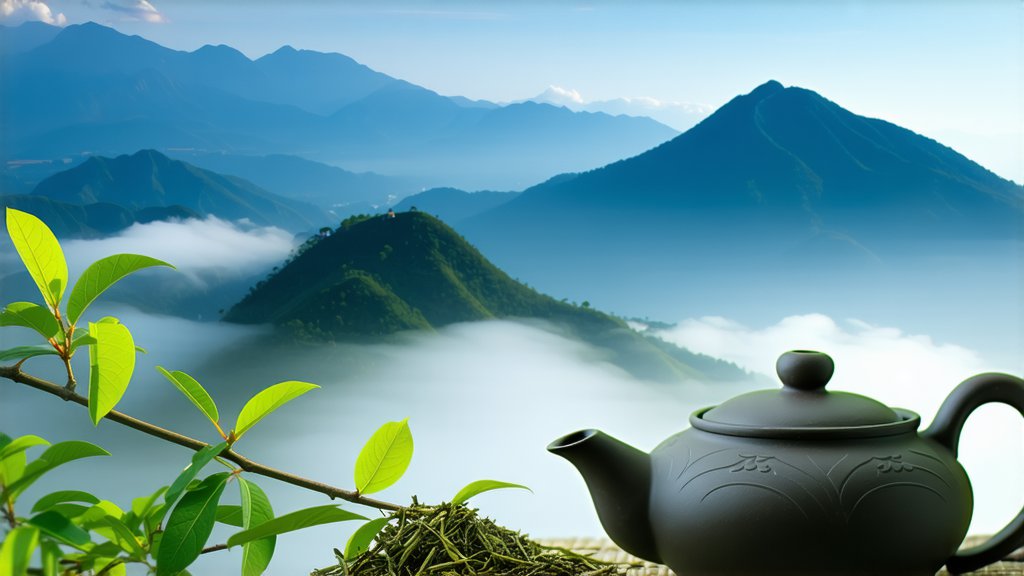
In the vast and diverse world of Chinese tea, few varieties capture the imagination quite like Huangshan Maofeng, a distinguished member of the yellow tea family. This tea is not only a testament to China's rich tea-making heritage but also stands as a symbol of the meticulous craftsmanship that defines traditional Chinese tea culture. In this exploration, we delve into the history, varieties, production process, and the art of tasting Huangshan Maofeng, offering an in-depth look at what makes this tea so unique and highly regarded among tea connoisseurs worldwide.
History and Origins
The story of Huangshan Maofeng begins in the Tang Dynasty (618-907 AD), during which time it was already celebrated for its exceptional quality. The name "Huangshan Maofeng" translates to "Yellow Mountain Peak," referring to the stunning Yellow Mountains (Huangshan) in Anhui Province, where this tea is predominantly produced. These mountains are not only famed for their breathtaking beauty but also for their ideal climatic conditions for growing high-quality tea. The legacy of Huangshan Maofeng has been passed down through generations, with each era adding its own touch to the perfection of this exquisite tea.
Varieties of Huangshan Maofeng
While Huangshan Maofeng is primarily known for its yellow tea variety, it's essential to note that the term encompasses a range of grades and styles. These variations depend on factors such as the season of harvest, the part of the tea plant used, and the specific processing techniques employed. The most prized varieties are often those picked in early spring, known for their tender leaves and vibrant flavor profile. Each variety offers a unique glimpse into the diversity and complexity that can be achieved within the yellow tea category.
The Art of Crafting Huangshan Maofeng
The production of Huangshan Maofeng is a meticulous process that requires precision and care. It begins with the careful selection of tea leaves, typically from the young shoots and buds of the Camellia sinensis plant. After harvesting, the leaves undergo a unique micro-oxidation process, which sets yellow tea apart from green and black teas. This involves steaming or pan-frying the leaves at a low temperature to slow down the oxidation process, resulting in the characteristic yellow color and subtle flavor profile of Huangshan Maofeng.
Following micro-oxidation, the leaves are shaped and dried, often by hand, to preserve their delicate structure and aroma. The final product is a testament to the skill and dedication of the tea masters who craft it, embodying centuries of tradition and expertise.
The Ritual of Tasting Huangshan Maofeng
Tasting Huangshan Maofeng is an experience that engages all the senses. To fully appreciate this tea, one must pay attention to its appearance, aroma, taste, and even the texture of the leaves. Upon brewing, Huangshan Maofeng reveals a light, golden liquor that is both visually appealing and indicative of its gentle nature. The aroma is subtle yet complex, often described as having floral, fruity, and nutty notes, with a hint of sweetness.
When sipping, the tea offers a smooth, mellow taste with a slightly sweet aftertaste that lingers pleasantly on the palate. The texture is silky, showcasing the high-quality leaves used in its production. Observing the unfolded leaves post-brewing provides insight into the tea's journey from plant to cup, revealing the artistry involved in its creation.
In conclusion, Huangshan Maofeng is more than just a tea; it is a cultural treasure that embodies the essence of Chinese tea-making traditions. Its history, varieties, and the intricate process behind its production all contribute to its status as a revered beverage among tea enthusiasts. Tasting Huangshan Maofeng is an invitation to embark on a sensory journey that connects the past with the present, offering a profound appreciation for the beauty and complexity of Chinese tea culture.